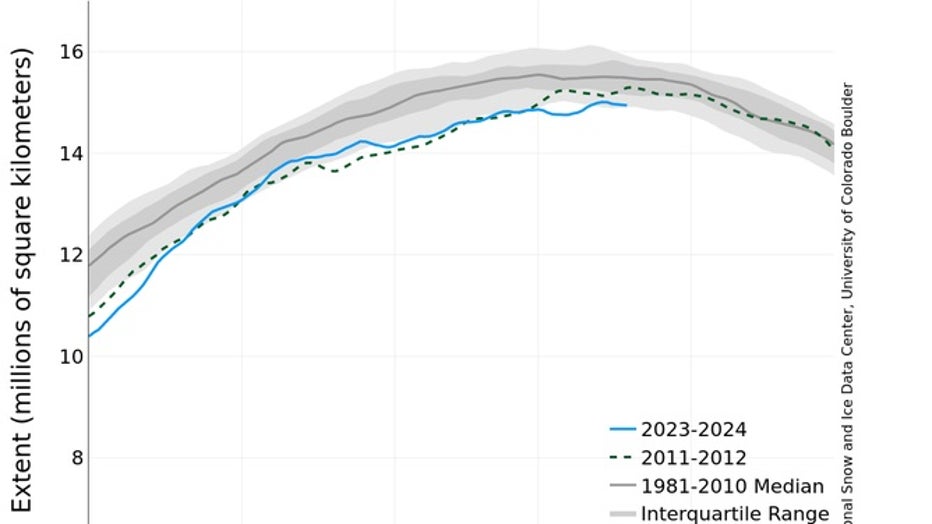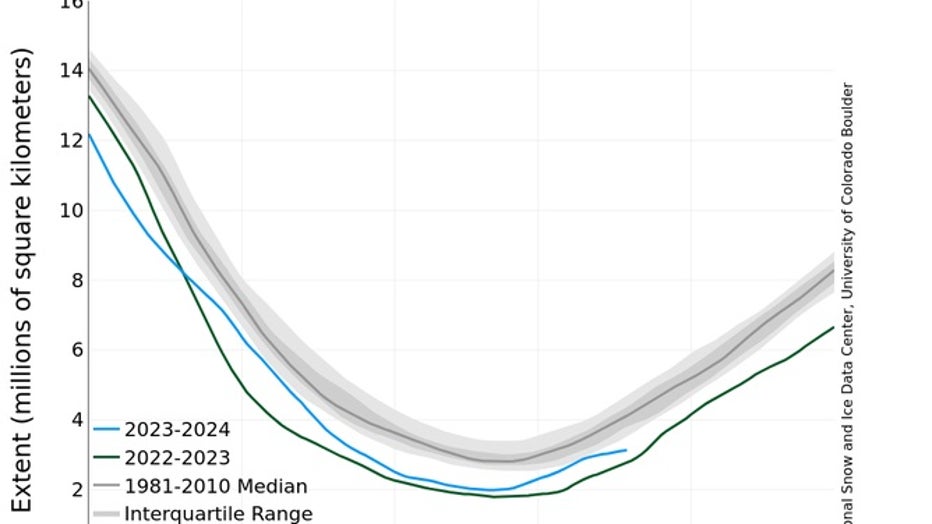How scientists believe the loss of Arctic sea ice will impact US weather patterns
As Arctic sea ice continues to reach new lows, a study conducted by researchers at Pennsylvania State University suggests that changes in weather patterns in the U.S. and other similarly positioned countries could be on the way.
The study published in the Journal of Climate said computer models indicate fewer cold air invasions making their way into the U.S., as ice coverage decreases.
Researchers said limited sea ice allows heat from the ocean to enter the atmosphere, which can help create lower pressure. Cold air tends to stay more bottled up around these areas, resulting in a lack of movement toward mid-latitudes, where much of the U.S. is situated.
"As warming continues, we know that the Arctic is going to be less cold," Melissa Gervais, an assistant professor in the Department of Meteorology and Atmospheric Science at Penn State and lead author of the study, said in a statement. "What this work shows us is that the loss of sea ice also changes weather patterns that bring cold air to the middle latitudes. So, warming both depletes your source of cold air and makes it harder to transport."
ANTARCTICA’S ‘DOOMSDAY GLACIER’ IS MELTING AWAY DIFFERENTLY THAN SCIENTISTS FIRST THOUGHT

Latest Arctic Sea ice extent (National Snow and Ice Data Center / FOX Weather)
The middle latitudes are generally defined as the region between 23 degrees north latitude to the Arctic Circle and south of the equator, from the Tropic of Capricorn to the Antarctic Circle.
It is within these regions that storm systems usually develop and clash with polar air masses.
The study did not state whether scientists expect similar atmospheric conditions to occur over the Southern Hemisphere during low-ice events in Antarctica.
In previous studies, the Arctic has been more closely linked to climate change than Antarctica.
Scientists contend that understanding sea ice dynamics would provide valuable insight for meteorologists and climate experts.
"We found that when we lose sea ice, not only is that anomaly reduced, but it also actually becomes a warm pattern," Gervais stated. "So, the same pattern in the upper atmosphere is now actually bringing warmer temperatures near the surface."

Latest Antarctic Sea ice extent (National Snow and Ice Data Center / FOX Weather)
According to NASA, Antarctica loses about 150 billion tons of ice per year, and melting around Greenland leads to an additional 270 billion tons of ice that is lost.
Record global heat is widely expected to continue through at least 2024, which will likely lead to more instances of impacts on mid-latitudes.
"One weather pattern particularly impacted by the loss of sea ice involved cold weather anomalies over North America," Penn State stated. "The pattern is associated with strong cold anomalies, which reached roughly 29 degrees Fahrenheit under current sea ice conditions but warmed significantly under the scenarios with less sea ice."

